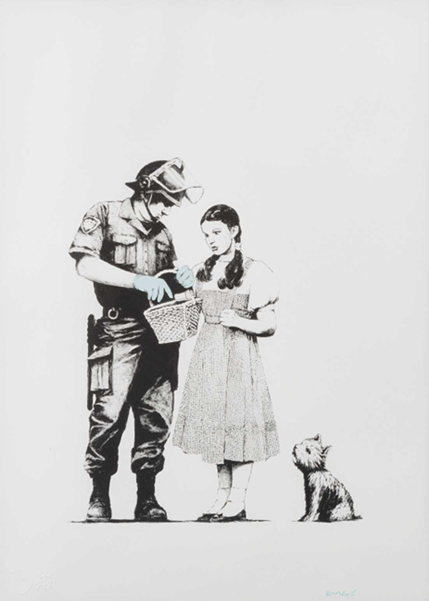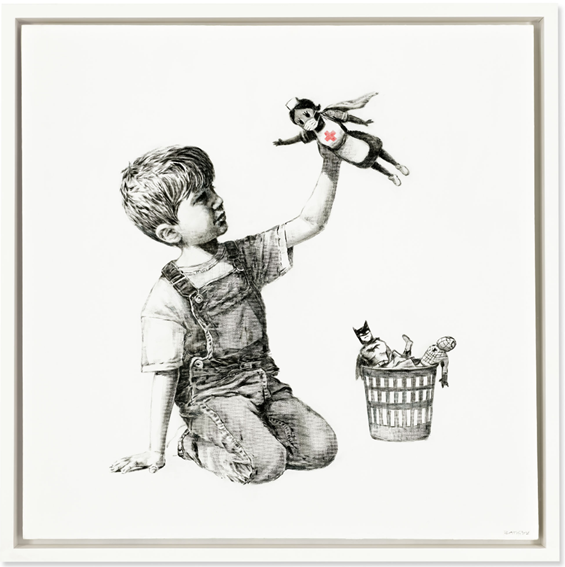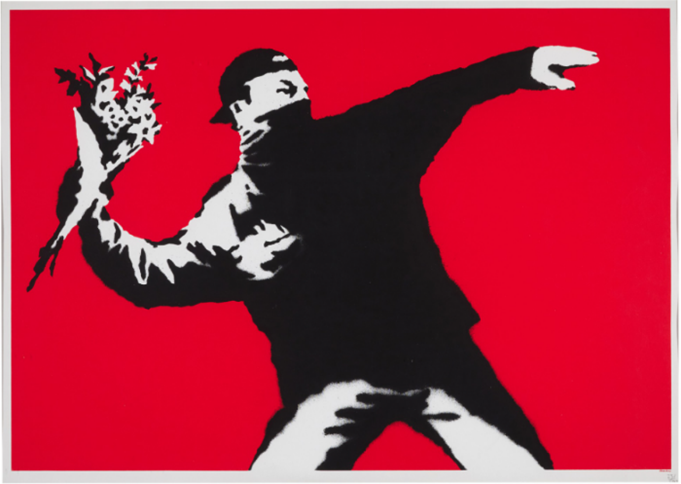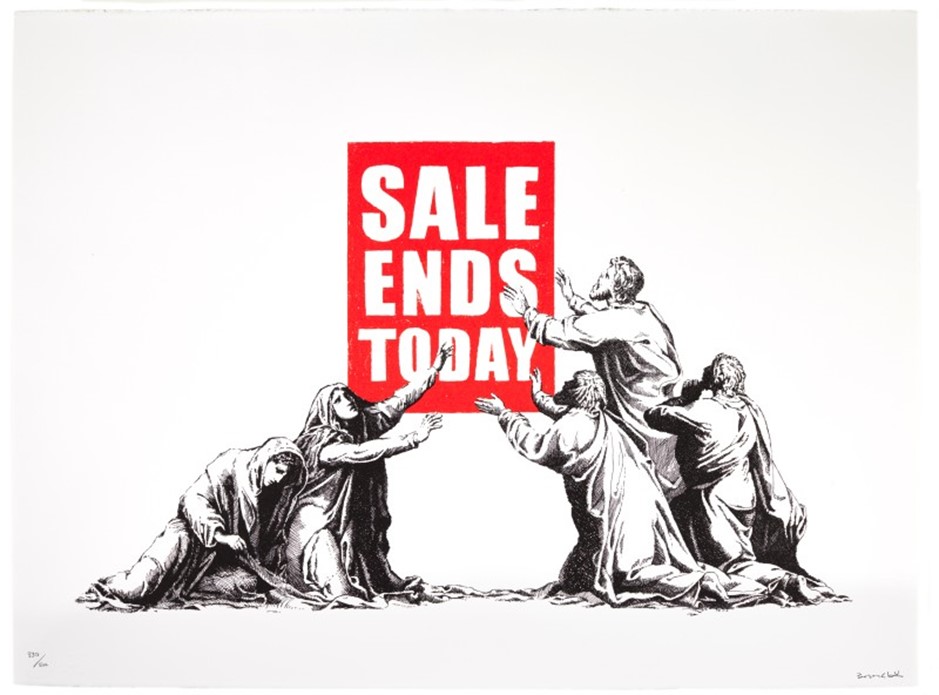A recent study from Dr Stephen Clark explores the change in price of limited-edition Banksy prints over the last decade – we asked him to share his thoughts on whether there was a Banksy price bubble during COVID 19.
Here at the CDRC we work with industry partners to make consumer related data available to trusted researchers, whose work can help us to understand important social challenges. In this piece here we are looking at a particularly niche consumer and their behaviour during an extra-ordinary period in recent history.
The consumers are those who purchased limited edition prints at auction by the street artist Banksy, and the time period is during the global COVID-19 pandemic. In particular, did a pricing bubble occur for his works during this period?

Why Banksy?
Banksy is probably the world’s most famous street artist. His true identity is unknown but it is believed that he started his street work during the early 90’s in the English city of Bristol.

https://pestcontroloffice.com/use.asp
He is best known for his satirical humour and takes on modern life, mixing together commercial, political and contemporary images to provide social commentary.
His works consist of one-off originals and, in the late 90’s and early 2000’s, he started to produce a limited number of screen prints in signed and unsigned editions. These were eagerly purchased, initially by an enthusiast class of customer, but, as his popularity and value increased, latterly by an investor class. On the primary market these prints would initially sell for less than £500.
The data – Banksy Auction Results
In this study use is made of the database of Banksy auction results maintained by the www.banksy-value.com web site. This web site has catalogued the details of Banksy works sold at auction houses all over the worlds since the mid 90’s.
The limited edition prints in this database are used to examine what features of a print influence the selling price, and to what extent these prices may have been affected by the COVID-19 pandemic
The impact of COVID-19 on the sales prices of Banksy limited edition art works
The www.banksy-value.com web site maintains a tracker index for the sales prices of Banksy limited edition art works and this begins to show the impact and the extent of COVID-19 on his market.

From this chart it is clear that there was a steep rise in the sales price of Banksy prints starting in early to mid-2020, and that in recent months the prices have dropped considerably to back where they were at the start of the pandemic.
But does this meet a definition of a bubble? A bubble in asset classes, such as stocks and shares, housing, crypto-currencies and even tulips, is composed of many stages: Expectation; Boom; Euphoria; Profit-taking and Panic.
The start of the COVID-19 pandemic was an unprecedented time in recent history. Many people were unsure of their futures, both health wise and economically.
This uncertainty could have gone two ways in the Banksy art market, either people would be desperate to sell his works to get cash for daily expenses and his prices would crash, or they could seek out opportunities to invest for the future and look to Banksy works to provide a safe – and accruing – haven for any savings or credit. Clearly from this figure it was the latter case.
In the hedonic regression model for Banksy prints, a number of factors were controlled for before examining the impact of COVID-19. These included the particular image, if the print was signed by Banksy, the condition of the print, and the size of the edition. The reputation of the auction house and the location of the sale were also used along with a linear time trend. To capture the impact of COVID-19 a series of eight half year 0/1 variables were used to measure this impact and by using a random effects model, the impact was allowed to vary by the image. This would allow an assessment of whether the price of some images were impacted by COVID-19 more than others.

Firstly the extent of the COVID-19 shock is shown in this chart. In the years prior to the second half of 2019, the long run cost of a Banksy print at auction was about £10k, but by the end of 2019 the price was more in the region of £25k. These prices quickly rose, by the end of 2020 tripping to around £75k within a year. Such prices were not sustained however, and starting in the second half of 2021 the prices began to fall.

Some prints were affected more than others. The iconic ‘Flower Thrower’ (aka ‘Love is in the Air’) print nearly quadrupled in price at the peak of the bubble, whilst some more mainstream prints showed a more modest doubling in prices.

Banksy joins Warhol and Hirst with the dubious honour of having his own bubble.
It is the contention of the article that accompanies this piece that there was a bubble in the price of Banksy prints sold at auction during the COVID-19 pandemic and that the size of the bubble inflated prices to around 3 time their pre-pandemic levels. Prices had by early 2023 returned to the levels seen before the pandemic. The size of the bubble also varied by the print image.
Banksy has now joined other artists such as Warhol and Hirst with the dubious honour of having his own bubble, and he has lost his mystic that his works would always hold their value.


